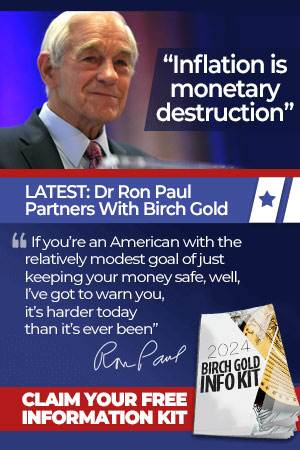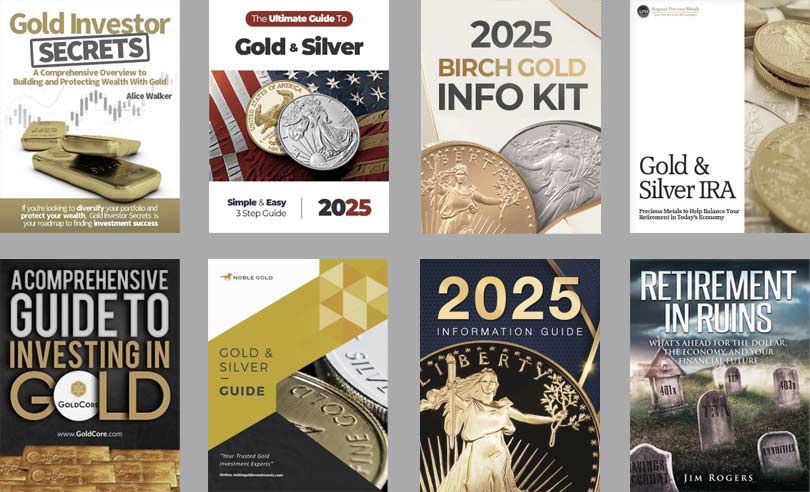Why the Fed Can’t Win – and We All Lose
 Bullion.Directory precious metals analysis 09 August, 2024
Bullion.Directory precious metals analysis 09 August, 2024
By Peter Reagan
Financial Market Strategist at Birch Gold Group
In the much-anticipated statement following the most-recent FOMC meeting, Federal Reserve Chairman Jerome Powell hinted at the possibility of near-term rate cuts.
If rates start falling, that would certainly get speculators excited. But let’s examine the situation a little more closely.
Here is the relevant portion of the official statement:
In support of its goals, the Committee decided to maintain the target range for the federal funds rate at 5-1/4 to 5-1/2 percent. In considering any adjustments to the target range for the federal funds rate, the Committee will carefully assess incoming data, the evolving outlook, and the balance of risks. The Committee does not expect it will be appropriate to reduce the target range until it has gained greater confidence that inflation is moving sustainably toward 2 percent.
But earlier in the statement, Chairman Powell also stated its key judgment:
The Committee judges that the risks to achieving its employment and inflation goals continue to move into better balance.
That judgment could be a signal that the Fed is operating under the impression things are progressing in the right direction economically, and hint that the potential for rate cuts are in the cards at some point in the future.
In fact, there has been speculation that those rate cuts could happen as soon as September, and even some speculation they could happen in November.
But if the Federal Reserve were to cut rates, that could also add to the list of mistakes that the central bank has made since 2020. Especially if inflation heats up again.
According to Michael Busler, in hindsight, the Federal Reserve made two big mistakes in the last four years:
Their first mistake was to keep interest rates near zero and to rapidly expand the money supply during all of 2021 and the first half of 2022. They did this while the annual inflation number went from 1.4% in December 2020 to 9.1% in June 2022.
Their second mistake was to end the interest rate increases in September 2023. That ending kept the Fed Funds rate in the 5.25 to 5.50 range. Had they raised interest rates one or two more times before the end of 2023, inflation would not have increased, as it did, in early 2024.
Missing the mark once is one thing. But missing the mark twice, especially when it comes to the “tax no one voted for” (inflation), is quite another.
Which brings us back to the potential for the Fed to cut rates in the near future. We could find that the much-anticipated “soft economic landing” is just an illusion.
Misplaced hope may be all that’s supporting the economy
The Federal Reserve began to raise rates after “transitory” inflation turned out to be much more entrenched than Powell thought.
But according to a recent Reuter’s report, any potential rate cuts could be issued out of a more frantic decision-making process:
Fed rate-hiking cycles are often conducted gradually, at former Fed Chair Alan Greenspan’s famous “measured pace”. But not easing cycles.
History shows that rate cuts are often large, aggressive and reactive because policymakers are forced onto the back foot and into frantically responding to damaging forces spiraling out of control, like recession or severe financial market dislocation. Or both.
Or put another way, the economy practically never enjoys the fabled “soft landing.” Instead, it’s often facing an emergency landing. And that’s because lagging behind is more a feature of Fed policy than a bug.
One of the many economic forces spiraling out of control could be job creation, which is fraying at the edges, according to a recent article:
The job growth we now see is overwhelmingly driven by part-time jobs and government jobs.
Moreover, the most recent JOLTS report from the BEA shows a couple of interesting (and negative) trends. The first is that job openings continue to decline. Of special interest, however, is how the decline in job openings would be far larger were it not for the fact that government job openings have been surging to near all-time highs in recent months. As with overall payrolls, we find that the jobs economy continues to be propped up by the massive amounts of government spending that are pushing national debt totals to unprecedented levels.
According to a paywalled CNBC report, JPMorgan placed the odds of a full-blown recession starting this year, at 35%. Those odds stand contrary to corporate media sources like Axios and The Guardian, where so-called “experts” aren’t giving the possibility of economic recession a second thought.
We think you should get ready, because as you just read, the Fed itself is pointing towards interesting economic times ahead…
Brace yourself now for the Fed’s “panic mode”
From here, the Fed is stuck between a rock and a hard place.
On one hand, if inflation starts to heat up again, Chairman Powell may not be able to start raising rates to cool it off. And remember, one of the primary causes of inflationary pressure? Government spending. So far, the Biden administration has added over $7.4 trillion to the national debt, in the form of massive annual government deficits.
With that in mind, it’s not exactly clear how our nation could possibly avoid another inflationary spiral in the months ahead.
On the other hand, a recession may have already started. When that becomes too obvious to ignore, we all know the Fed’s playbook for economic recovery:
- Drop interest rates (robbing savers of income)
- Money-printing (aka “quantitative easing”)
- Bailouts of whichever troubled companies are sufficiently well-connected to be considered “systemically important”
The problem? These moves are highly inflationary. But that’s the point – to the Fed, incinerating the purchasing power of your dollars even further forces you to spend them. And consumer spending is the backbone of the U.S. economy.
So it’s not just the Fed that’s stuck between a rock and a hard place – it’s all of us.
Keep in mind one final fact: Over the last 40 years, the Fed began lowering interest rates only after a recession had already begun.
That means it’s time to make sure your retirement savings could weather an economic storm like the one that appears to be in front of us. One way to do that is take a few minutes and learn about the benefits of owning physical precious metals.
That’s because investing in precious metals like gold and silver has been a stable store of wealth for thousands of years, and could also help you build some resilience into your retirement.
But what’s more important, both metals could also help to preserve your purchasing power no matter what happens in the future.
Both gold and silver have served as safe haven, store-of-value assets throughout human history.
Peter Reagan

Peter Reagan is a financial market strategist at Birch Gold Group, one of America’s leading precious metals dealers, specializing in providing gold IRAs and retirement-focused precious metals portfolios.
Peter’s in-depth analysis and commentary is published across major investment portals, news channels, popular US conservative websites and most frequently on Birch Gold Group’s own website.
This article was originally published here












 Material provided on the Bullion.Directory website is strictly for informational purposes only. The content is developed from sources believed to be providing accurate information. No information on this website is intended as investment, tax or legal advice and must not be relied upon as such. Please consult legal or tax professionals for specific information regarding your individual situation. Precious metals carry risk and investors requiring advice should always consult a properly qualified advisor. Bullion.Directory, it's staff or affiliates do not accept any liability for loss, damages, or loss of profit resulting from readers investment decisions.
Material provided on the Bullion.Directory website is strictly for informational purposes only. The content is developed from sources believed to be providing accurate information. No information on this website is intended as investment, tax or legal advice and must not be relied upon as such. Please consult legal or tax professionals for specific information regarding your individual situation. Precious metals carry risk and investors requiring advice should always consult a properly qualified advisor. Bullion.Directory, it's staff or affiliates do not accept any liability for loss, damages, or loss of profit resulting from readers investment decisions.

Leave a Reply